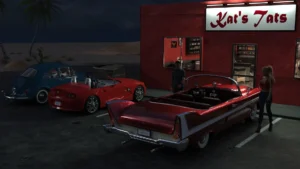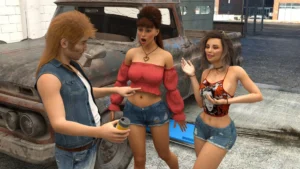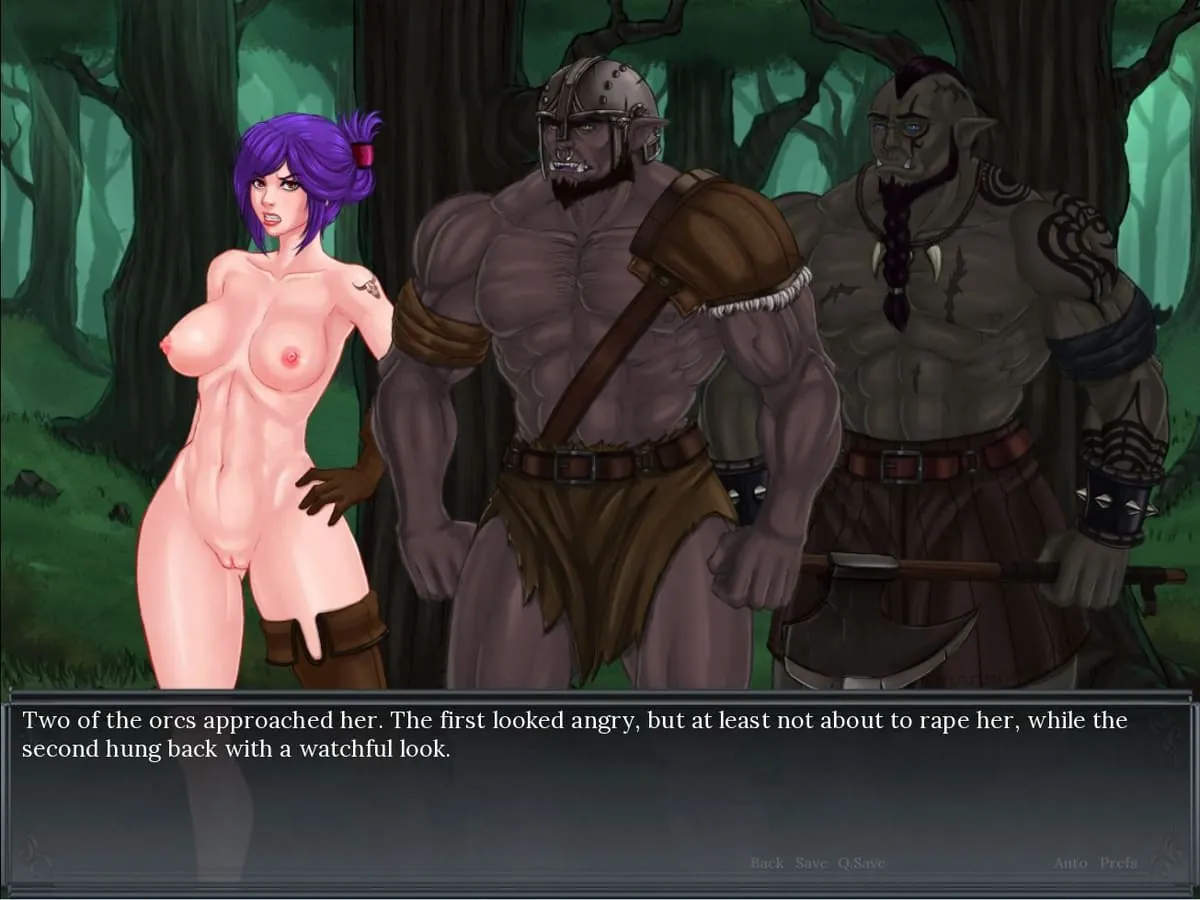
Long Road Home
Play Long Road Home
Long Road Home review
Explore the story, gameplay, and unique features of Long Road Home by OBD Games
Long Road Home is a compelling adult visual novel game developed by OBD Games that takes players on an emotional and immersive journey. Centered around a man recently released from prison, the game explores his struggle with past trauma and his quest to find belonging within rival outlaw biker clubs. With rich storytelling, detailed 3D visuals, and multiple narrative paths, Long Road Home offers a unique experience for fans of interactive adult games. This article delves into the game’s storyline, gameplay, and standout elements to help you understand what makes it so engaging.
Understanding the Storyline of Long Road Home
When you first boot up Long Road Home, you might think you’re in for a typical bad-boy biker tale. I know I did. But within the first hour, OBD Games completely subverts those expectations, pulling you into a raw, unflinching look at a man desperately trying to outrun his past. 🏍️ This isn’t just a game; it’s an emotional excavation. The Long Road Home storyline is the star of the show, a meticulously crafted narrative that grips you from the first scene and doesn’t let go. It’s a story that stays with you long after you’ve closed the game, making you question what it truly means to find your way back.
The game’s power lies in its refusal to offer easy answers. It presents a world painted in shades of grey, where good intentions can lead to terrible outcomes, and the path to redemption is littered with obstacles both external and, most painfully, internal. If you’re looking for a shallow power fantasy, look elsewhere. But if you crave a story with genuine narrative depth that isn’t afraid to explore the messy, complicated parts of the human experience, you’ve found your next obsession. Let’s dive deep into the heart of this unforgettable journey.
Who is the Protagonist and What Drives His Journey?
At the center of this storm is the Long Road Home protagonist, a man we know only as “Chief.” 🧍♂️ He’s not a blank slate for you to project onto; he’s a fully realized character with a heavy history. A decorated combat veteran, Chief has just been released from a military prison, and the world he returns to is alien and unwelcoming. He carries the weight of his service and his incarceration not just in his record, but in his soul.
What makes Chief so compelling is his internal conflict. He’s physically free, but mentally, he’s still in chains. The game does a phenomenal job of making you feel his mental trauma. You’ll experience his panic attacks, his flashbacks, and the constant, low-grade hum of anxiety that defines his existence. This isn’t just told to you; it’s woven into the fabric of the gameplay and dialogue. His primary drive isn’t wealth or power—it’s something far more fundamental: the need for peace. He’s searching for a quiet place where his past can no longer haunt him, a place to call home. This desperate search is the engine of the entire Long Road Home storyline.
My Take: Playing as Chief felt less like controlling a character and more like being a companion on his difficult journey. There were moments where I had to put the game down and just process a decision, because the weight of his mental trauma made every choice feel monumental. It’s a rare game that can create that level of empathetic connection.
To help you keep track of the key players in Chief’s life, here’s a breakdown of the central figures:
| Character | Role | Connection to Chief |
|---|---|---|
| Chief | Protagonist | A veteran seeking redemption and a place to belong, grappling with severe PTSD. |
| Maya | Old Flame | A link to Chief’s life before the military, representing the normalcy he lost. |
| Jackal | President of The Asphalt Reapers | Offers Chief a potential new family, but with dangerous strings attached. |
| Viper | Leader of The Iron Serpents | Represents a different, more chaotic path that challenges Chief’s morals. |
The Role of Outlaw Biker Clubs in the Narrative
You can’t talk about the Long Road Home storyline without diving into the world of the Long Road Home biker clubs. 🏍️⚔️ This isn’t just background flavor; the clubs are active, dynamic forces that shape Chief’s journey at every turn. The two main factions, The Asphalt Reapers and The Iron Serpents, are more than just rival gangs—they represent two very different philosophies and potential futures for our protagonist.
The Asphalt Reapers often present themselves as a brotherhood, a structured organization that offers the discipline and camaraderie Chief lost after leaving the military. On the surface, they promise the family he so desperately craves. Meanwhile, The Iron Serpents are wilder, more unpredictable, and often operate outside even the loose codes the Reapers follow. Your interactions and choices regarding these Long Road Home biker clubs form the core of the game’s branching narrative. Will you seek solace in the rigid hierarchy of one club, or embrace the anarchic freedom of the other? Or will you try to walk the razor’s edge between them?
The brilliance here is that neither club is purely good or evil. The Reapers have their dark secrets, and the Serpents have their own twisted code of honor. This moral complexity forces you to constantly evaluate your alliances. I found myself second-guessing every decision, because aligning with one club could mean making a mortal enemy of the other, with consequences that ripple through the entire story. Your relationship with these clubs is the primary vehicle for the game’s incredible narrative depth, creating a playthrough that feels uniquely your own.
Themes of Redemption and Belonging
If there’s one central pillar holding up the entire Long Road Home story analysis, it’s the powerful Long Road Home redemption theme. 🔄❤️ Chief’s entire journey is a quest for absolution—not necessarily from a court of law, but from himself. He’s done things he regrets, both in war and after, and the game forces him (and you) to confront those actions head-on. Can a man truly wash the blood from his hands? Is he worthy of a second chance?
This theme is inextricably linked with his search for belonging. 👨👩👧👦 After losing his military family and his place in the world, Chief is adrift. The Long Road Home redemption theme isn’t just about atoning for past sins; it’s about earning a new place to stand, a new family to fight for. This could be with one of the biker clubs, with Maya, or perhaps with a new group of outcasts he meets along the way. The game masterfully explores how the desire to belong can make us vulnerable, can lead us into compromising situations, and can ultimately be the thing that saves us.
This is where the game’s narrative depth truly shines. It understands that redemption isn’t a single, grand gesture. It’s a series of small, daily choices. It’s in how Chief treats a stranger, whether he helps someone in need, or if he chooses mercy over vengeance. Your dialogue options and actions constantly feed into this theme, making you an active participant in Chief’s moral rehabilitation. The Long Road Home story analysis would be incomplete without acknowledging how these two themes—redemption and belonging—are braided together to create a profoundly moving and thought-provoking experience. The Long Road Home isn’t just a destination on a map; it’s a state of being that Chief, and by extension you, are fighting to reach.
Long Road Home stands out as a richly crafted adult visual novel that combines a gripping narrative with immersive gameplay and impressive technical design. Its exploration of complex themes through the eyes of a troubled protagonist, coupled with meaningful player choices and high-quality visuals, creates a memorable experience. Whether you are drawn to its story depth or interactive elements, Long Road Home offers a unique journey worth exploring. Dive into the game today and discover the many paths that await.






























